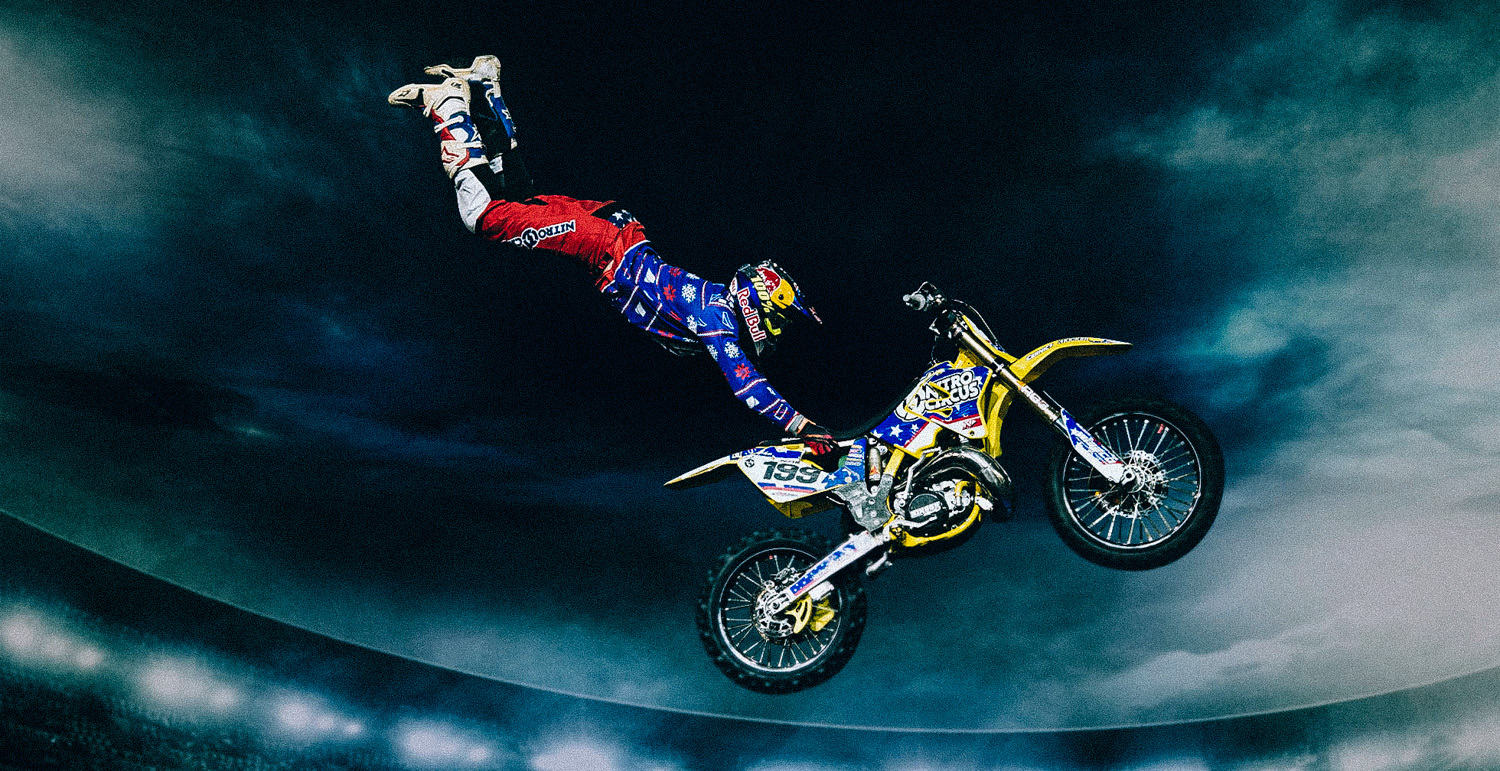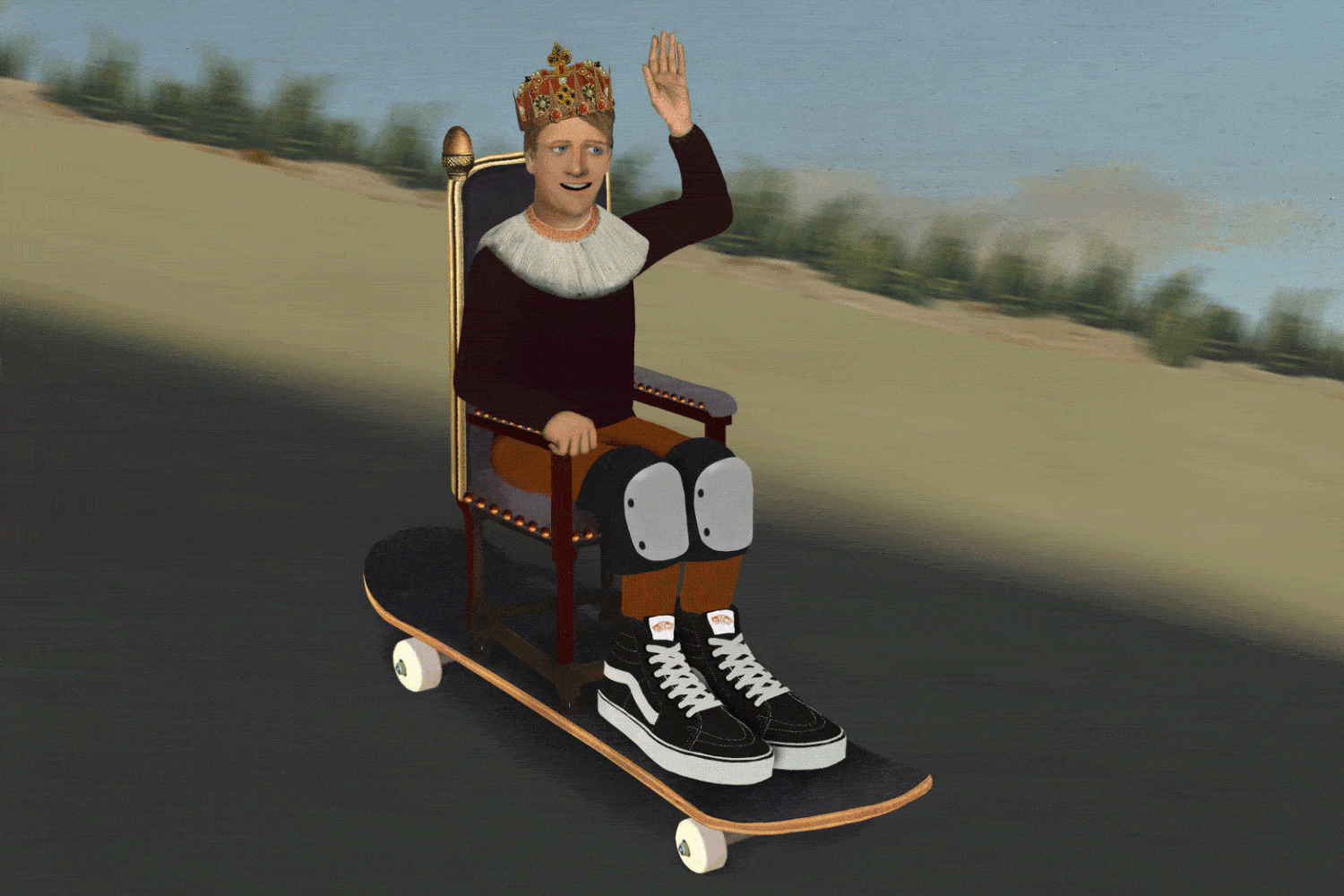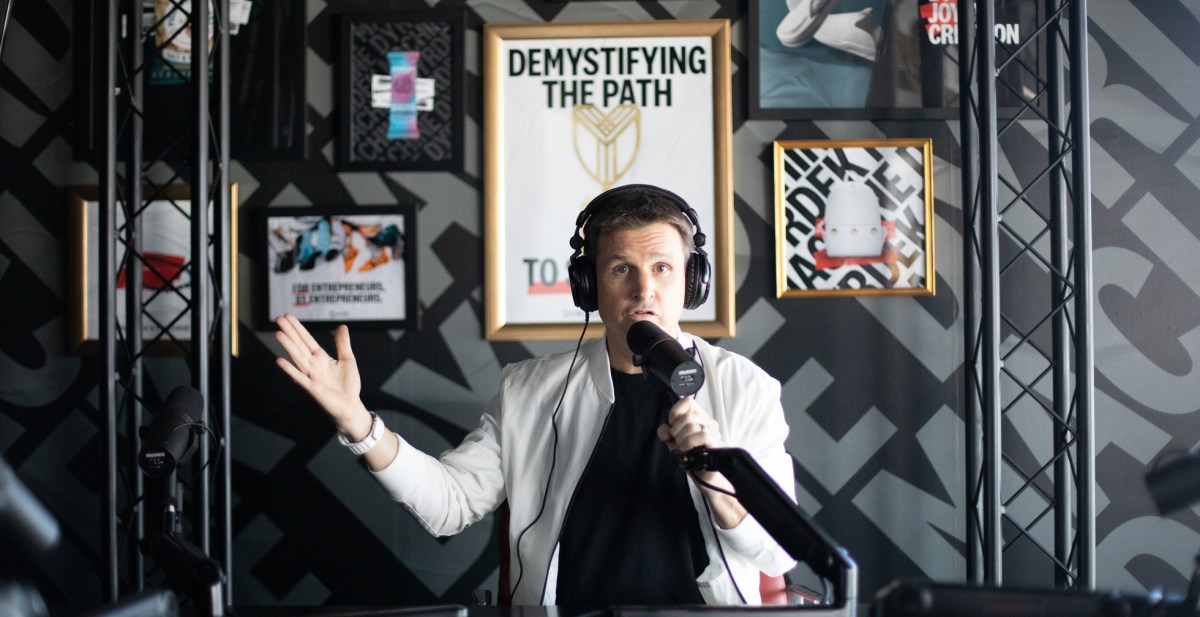
Rob Dyrdek Has Cracked the Code for Human Efficiency
Beyond all the Ridiculousness, Dyrdek is laser-focused on brand building, human optimization and helping inspire a generation of aspiring entrepreneurs
By Danny Agnew
Rob Dyrdek is not a guy most people would expect to launch into an impassioned and well-informed treatise on the concept of “product-market fit.” Not that this occurrence is particularly surprising when you take a moment to think about it — anyone who has been around as long as Dyrdek has and achieved the success he enjoys in such a wide variety of professional pursuits is bound to have a pretty solid business acumen. That being said, it cannot be denied that for a large number of people, the name “Rob Dyrdek” conjures some combination of the following three things:
- A television program in which he and his best friend/security guard frequently attempted to break random Guinness World Records and once, on a lark, purchased a mini horse as a pet
- A second television program in which he was attacked by a trained tiger and also convinced Los Angeles Mayor Antonio Villaraigosa to ride with him on the world’s largest skateboard
- A third television program in which he and his friends/guests crack wise regarding online clips of total strangers meeting various and sundry forms of bodily injury
But the truth of the matter is, these sillier pursuits of Dyrdek’s — as well as his highly gregarious, affable personality — belie an incredibly intense drive and one of the more astute entrepreneurial minds out there. Dyrdek’s production company Superjacket produces not only his own television efforts but several other successful shows as well, and since 2015 Dyrdek has poured his energy into The Dyrdek Machine, a “venture creation studio” focused on partnering with what Dyrdek refers to as “Do-or-Dier” entrepreneurs to create brands from the ground up and take them to exit.
Dyrdek’s just-launched podcast “Build With Rob” (now available on Spotify) finds him sitting down with his startup partners to discuss the creation of their brands and the lessons they’ve learned along the way. We sat down with him via Zoom to discuss the pod, his method for building successful businesses and his intensely data-driven approach to leading a balanced and optimized life.
InsideHook: I feel like you’ve had a really wild and weird career path — as much as the world of skateboarding has a traditional trajectory, you completely broke the mold on that. To what do you attribute that?
Rob Dyrdek: I think probably for the most part it’s letting your dreams evolve around your opportunities. Even when I turned pro as a skateboarder, you’ve got to understand, it was not a real career path. It was in the ’90s, when it was dead. I got a check for $2 on the Christmas of 1991 for selling one board. After I quit high school, I was guaranteed $1,000 a month if I would move to California, and I thought I’d won the lottery.
Then I wrote a skit for a skate video about bringing a security guard to deal with security guards, which then opened up this television opportunity. Then I attacked that and learned television and began to scale that. I think early on it was this idea of loving to create all different types of things that led me to try so many different things beyond just being a skateboarder. That allowed this very unusual trajectory of a career, if you will.
Speaking of television, is it weird to turn on the TV and see that you’re on MTV basically all day long? It’s just literally Ridiculousness episodes one after another after another for hours on end.
You might find it fascinating to know I’ve never even watched a full episode.
No shit?
I’ve certainly never watched it for any extended amount of time, but I do put it on to show my kids. Like, “Look, this is what dad does. This is what it looks like.” You know what I mean? And then as soon as it starts going it’s like, “Oh, shit. Oh, man, that’s pretty fun.”
Because you’ve got to think, I shoot six episodes a day. I have automated the system for how I produce it into this streamlined process. I go and basically freestyle comedy improv for about 35-40 minutes per episode, then on to the next one. So for me, it’s sort of this weird job that I have on the side. I have a lot of appreciation that people watch it for hours and hours at a time, but I almost barely even recognize it in my personal ethos because I primarily focus on all my business and family stuff.
That idea of “automating the system” to streamline it is interesting. Are you generally just a systems-oriented guy to be able to be efficient and get things done when you’re working on so many different projects?
Yeah. Look, I call it a “machine mindset.” You know what I mean? “Machine Method” is my system for building companies, machine mindset is how I live. It’s this idea of “How do you create systems? Then how do you add systems to systems and then optimize those systems?” Because ultimately, the systems and the automation allow things to become effortless. The more things that you turn effortless, the more time you have to put the energy into the stuff that you want to create.
I’ve evolved into a very clear planner and goal-setter, so that even when I’m hoping to build new projects and go through the pain of launching new things, I’m already laying the groundwork for those systems so that I can begin to push everything into automation as I choose to do it.
Then allllll of that connects to an entire system that is my life. I don’t look at my life as business and life, or like a work-life balance. I just have a complete life system that is all integrated and balanced at once. I have a 70-page operating manual for my life that’s managed by four different people that has automated every single aspect of my life. That allows me to primarily focus all of my time only on things that give me energy. That is essentially the goal behind the system.
Ok so just looking at the Machine Method part — the system for building companies — what would you say are the core tenets of that?
It starts first with evaluating the individual and the idea, right? Really I look at business through seven core capabilities: brand, product, media, marketing, sales, operation and finance. I’m really looking for an experienced entrepreneur that has general knowledge in the seven core capabilities.
Then building the business and making sure each one of those core capabilities is accounted for and has a body in place to operate it, that is the heart of the system of The Machine Method. With the intention of doing all your failing and shaping and chaos in the early stages before you get to market, so that you can find product-market fit at a much more accelerated pace.
That’s the goal with the system, right? Because business is extraordinarily painful when you cannot find product-market fit and you’re trying everything you can and pivoting all over the place and doing all this stuff because you just rushed to market and you have incomplete concepts or systems in place, whatever it may be.
The system is like: discovery phase, let’s do research to understand it. Then the diligence phase, let’s design the opportunity thesis. Then we launch it, then we grow it and sell it. At the end of the day, we co-find everything because I love creating the idea from a conversation. And then I’m judging myself on my return on capital and my IRR and ROI of what I invested to bring this project alive.
The Lusso Cloud came from a conversation with [legendary sneaker designer] Jon Buscemi about how much you both liked hotel slippers, right?
That was me and Jon Buscemi, he’s an amazing footwear designer and cultural icon, and we had a meeting and just started talking about what an idea could be. Then we talked about, “We should do a slide company.” And then it was like, “Okay. Is there an opportunity in slides?” We did this huge immersion and then saw that there was actually an opportunity in a hybrid slipper that was in this premium comfort of around $150, as we saw this dead space between a $45 slide and a Gucci slipper for $400. We refer to it as, “Close the toe and make the dough.”
We realized in that journey that, “Wow, there’s actually the opportunity to create sort of a cooler competitor to sit alongside UGGs and Crocs and Birkenstocks.” These three ugly comfort brands represent $3.6 billion in revenue.
For me, the naming process is always super important. With Jon it’s a little bit more organic because we wanted the word to sound like comfort. And “Lusso” is this soft, beautiful Italian luxury (Ed. note: “lusso” is “luxury” in Italian), and then we put the “Cloud” so that when you feel it and if you see the logo, it’s really squishy and soft, just like the value prop of the product. Ultimately, bringing that to life with someone like Jon Buscemi that can help shape and guide this idea into the actual product itself really fulfilled what we set out to do and found immediate success right out the gate.
All aspects of it I love. I love when I can have a conversation and know in 10 or 15 minutes if I want to build a company with this individual. We can have a conversation and I can understand the way that you look at business. Do you look at business multi-dimensionally? And as we start talking about an idea, or getting an idea, then we validate that idea. Even going through the first process of getting an immersion, like a 50-page deck, to look at an entire market and look at insights, I’m like, “Ooooh, look at this.”
Then probably the most thrilling thing is coming up with the name, seeing the logo for the first time. But then it’s like, man, the moment you hold it in your hand? Where it’s like, “Damn, it went from an idea, we talked about something, we went on this journey, and here it is.” That is always this extraordinary moment.
Then when it goes to market and people are buying it, it’s just like you just had an idea and a thought and then worked this path all the way to where now it’s in the ethos of the universe. All aspects of it I just absolutely love.
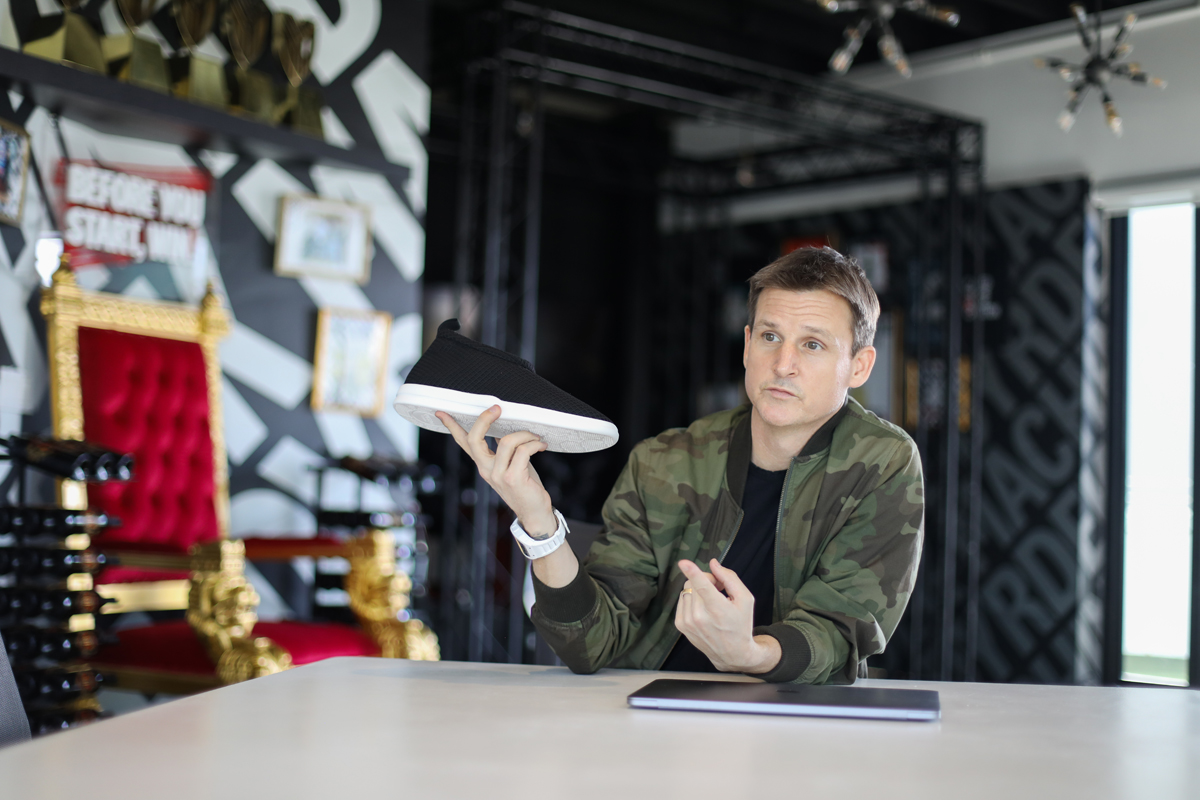
So is the podcast born of this deep love for the process? Like you wanted to share the process with a wider audience in this new format?
It’s like, “What is the format that I can show my actual way of thinking that serves the purpose of sharing the knowledge that I’ve developed?” Most people, as entrepreneurs, do two or three companies in their lifetime. But since I’m doing it from the idea stage and we’ve done 15 so far, it’s like the depth of knowledge gets so wide and the lessons become so clear. And really what I wanted to do was create a show that’s just me and the partners and the lessons that we learned together.
So we go through it: “This is what we learned when we built the company straight for exit in the entire process. This is what we learned from really adapting testing at our early stage of brand development.” The goal is to share with other entrepreneurs the lessons that I’m learning in real time, and then ultimately be a showcase where other great entrepreneurs say, “I want to build with Rob. I want to connect with him and build a company with him.” My ultimate goal is to showcase my way of thinking to attract more elite, multi-dimensional entrepreneurs with great ideas to build companies with.
Without giving too much away, are there any favorite insights or lessons you’ve learned from you guests on the show?
I think one of the biggest things that I went through and saw happen was with our portfolio company Outstanding Foods and the PigOut Pork Rind. They actually developed the PigOut Pigless Bacon Chip. We built that brand together. But this deep-fried umami mushroom that tasted like a chip of bacon but was all plant-based and vegan had crazy supply chain issues.
The CEO Bill Glaser is just a genius and he already had a clear place where he was going to pivot the product if they started to have issues with bringing it to market. He pivoted right into a pork rind and the business exploded. Just closed a $10 million round, valued at $100 million.
The lesson I learned from that is from now on, when I launch a business, I build businesses with pre-pivots. “Okay, here’s the thesis. We believe this is the hero product, but we are going to develop two or three other products in the chamber. In the case of Mindright, [nutrition] bars are super crowded. So if bars don’t work, we’re going to be able to pivot into a drink mix or a salty snack. In the case of Lusso Cloud, it was like, “Hey, we’ve got this premium $135 slipper that we’re going to go to market with — if we get pushback on pricing and finding a market, then we have a blown EVA one for $75 and a mid one for $90, on deck, ready to go, just in case we can’t find a consumer for it.
I think that’s one of the bigger lessons that is now applied across every consumer product that we created. Then even ultimately how we choose to build platforms that have those built-in product pivots as part of the launch, just in case, is just an evolved way of thinking. These are all things you learn with your partners. It’s us having this discussion about what we went through together, and then now how I apply those learnings to The Machine as a whole.
So over the course of doing so many brands, what would you say are the biggest challenges or potential pitfalls that people who get into this entrepreneurial process don’t consider?
I think it’s the value proposition of the product being unique enough to differentiate it inside the market. I think more often than not, how people define why their idea is different is just soft, and it’s really, really hard unless you have deep, unfair advantages. Like if you have Kylie Jenner, you can launch a makeup brand because you don’t have to innovate the product because you have her in the media and a direct connection with the consumer and an unfair advantage at driving sales.
And then I think the biggest thing that people overlook is the financial side. People think “D2C” and “I’m going to make this brand and I’m going to sell it online,” and you just have no idea how competitive, complex and expensive it is to actually acquire customers, to keep customers. And if you build a business online and don’t account for that in the margin or the unit economics of your business, you’re dead in the water the moment you launch. The two biggest pitfalls are just bad unit economics and not a clear enough differentiation in your product’s features and benefits.
Is there a type of product or brand that you’ve wanted to build but haven’t had a chance to yet?
I don’t know. I sometimes lean towards, “Here are spaces where I know there’s an opportunity,” but I don’t try to pursue anything without being able to complement another founder’s vision. If there’s not somebody there to be the driver, I tend to stay away from my own ideas of, “I really see this opportunity in this market here.” Because then I end up trying to chase somebody to build it, which becomes much more difficult than building it with somebody who is capable and that we’re then advising.
It’s like I’m industry agnostic and really about the fundamentals — is there white space? Does it have a clear path of liquidity? Does it have a Do-or-Dier, a founder with the seven core capabilities as a skill set? All of these things, when I look at a business, if they all qualify up? I like being surprised on what the opportunity is.
Can you talk a little bit more about the concept of a “Do-or-Dier” founder?
When I launched The Machine, I wanted to define it the most, right? I wanted it deeply defined. Because, to me, it’s grit, determination, fortitude, relentless work ethic and unwavering self-belief to turn your ideas into reality. See it, believe it, do it. Right? Where you can see what it can be, you build a plan so it’s believable, then you have the energy and effort and work ethic to actually do it.
In 2016 when I launched The Machine, I did so many companies in that first year, and that was what I looked at as the core attribute. But what I realized is, that’s the right energy, but you have to know the seven core capabilities. I ended up building businesses with people that had the Do-Or-Dier energy, spirit and mindset but didn’t have the skill set to see business multi-dimensionally.
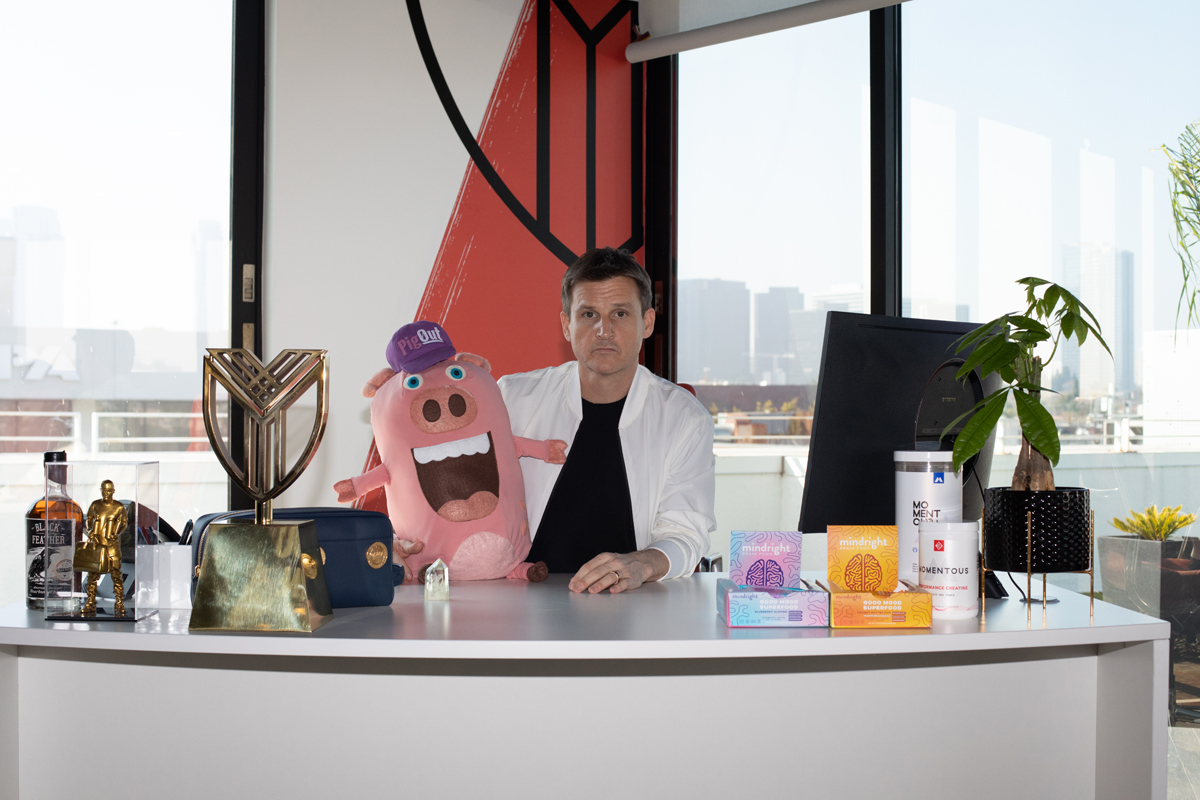
When you say multi-dimensionally, are you referring to those seven core capabilities?
Yeah. You’ve got to have general knowledge in them. Because if you don’t fully understand them, you’re not strategically looking at the business multi-dimensionally. The best of the best are right brain/left brain that are looking at the business from the financial opportunity first and then have the creative ability to make an amazing idea into a great brand. That’s the holy grail.
The great ones have knowledge in all seven of those core capabilities, so they know how to hire the right bodies to support them — rather than not having enough information to even ultimately do your due diligence on someone’s skill set as it relates to what you need.
And look, I also had to learn the seven core capabilities, because I used to be a product and marketing and brand guy. I would hire someone to do finances. I had to learn every single aspect. I had to dedicate a couple of years to just learning all things financial, so it became fun to me.
Now I apply that same creativity to how I build financial models and strategies and planning, and I love it. It used to suck the life out of me to be in a financial meeting and go through a financial model. I didn’t know half the stuff I was looking at. But I realized that, ultimately, you can’t be a business person at scale and not deeply understand the money, period.
As a person who is being pulled in so many different directions all of the time, how do you manage for the inevitable split focus?
Look, I am optimized towards life mastery. You’ve got to understand, I’m someone that tracks every hour of the day, what I do every single hour. And if I showed you the data from last year, it would show you that I spent seven hours sleeping, seven hours working, two hours on my physical body and seven hours with my family and friends. Perfectly balanced by design.
So what it ends up allowing is that now I understand how much energy and time I have to give on a weekly basis, inside structure. Understanding your time so specifically, you understand what you’re capable of managing and then you can become a master of automation and outsourcing so that you still live balanced and happy. Living the dream while still living at the full throttle of your capabilities.
When you say “If you look at the data from last year,” you’re keeping and analyzing that data somewhere? Like you’re spreadsheeting it out?
Yeah. Let me see if I can just pull this up for you. It’s so funny, I have my historical data of … look, I’ll show you. This is this year, what it looks like.
[Ed. note: at this point, Rob screenshares me on a system of spreadsheets designed to manage his life. I think he would forgive me for saying that, upon first glance, it looks borderline psychopathic — a painstakingly meticulous daily/weekly/monthly accounting of his time, complete with hyper-specific categorization as well a scoring system for his mood, effectiveness, etc. He begins to walk me through it.]
Okay. So this is what it looks like on a monthlong basis. As you can kind of see here, I really went hard, from a working perspective, in February. I break it into television, Dyrdek Machine and other. Then me and my wife, my kids, friends, gym, meditation, personal care.
This is the data that I carry. I track every day, zero to 10, how I feel about my life, work and health. This is what it looks like on a daily basis. Then I track how motivated I am, zero to 10, and how well I slept. Then I ask my wife every day how she feels about our relationship to stay optimized on that. Then full body composition. Every day, I get up at 5:00. Did I brain-train? Did I meditate? Did I work out? Did I have a clean diet? And did I not drink? And so you can see, brain-trained 100% of January and meditated 100%, worked out 87%. This is how disciplined this is.
That’s the beauty of the qualitative data is I ask myself every day: “How do I feel, zero to 10, about my life, my work, and my health?” And it became binary. If it’s below five, you look at the world half empty. You’re like, “I shouldn’t have fucking bought this house.” You could pick apart every decision you’ve ever made. Anything above five, you’re half full. It doesn’t matter what hits you, you’re going. And what happens by just asking yourself, “How do I feel about my life, zero to 10?” You become what I call qualitatively aware.
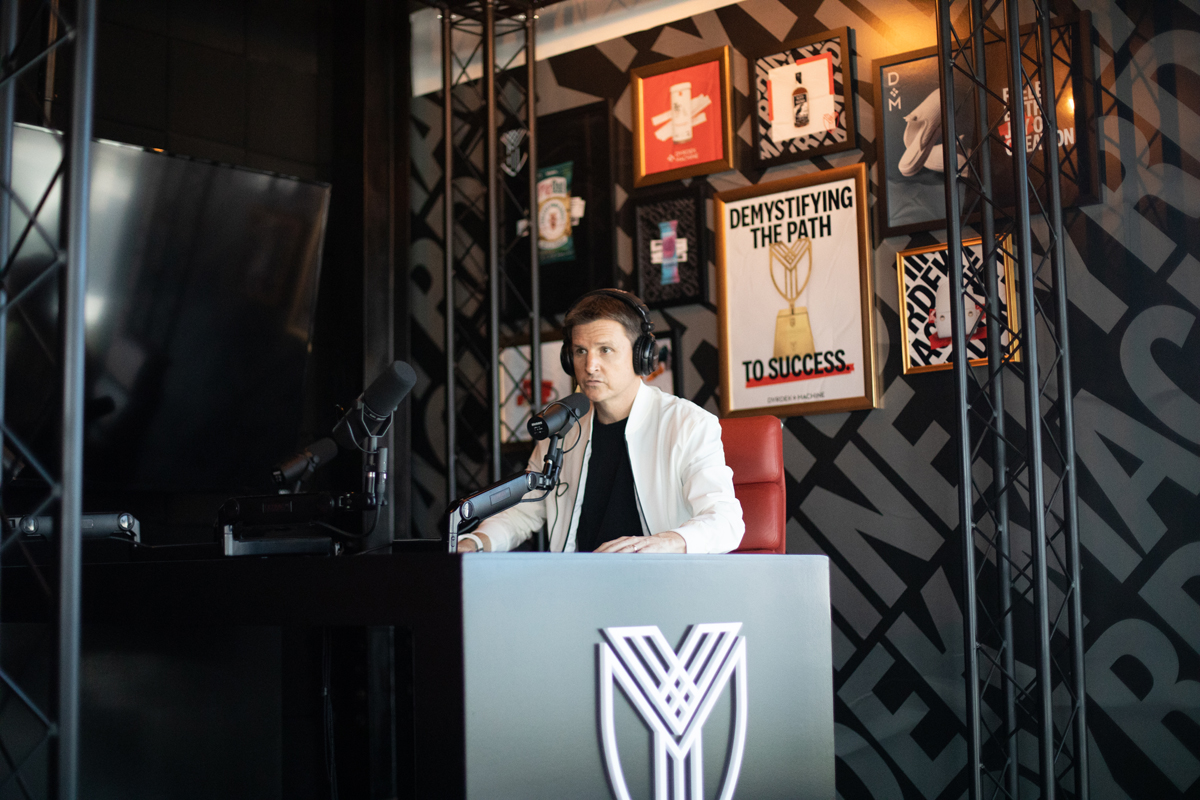
I’m gonna need you to elaborate on qualitative awareness for me.
What happens is you start to see the same things that bring you down, and then it becomes so clear like, “I need to eliminate that.” In your health, in your life, in your work. And over time, you eventually begin to clear out everything to where you eventually get to the state that I’m in now, it’s so optimized. Then I realize, “Okay, no, you have to get up at 5:00. When you get up at 5:00, clean diet, work out, meditate and don’t drink, you know how much happier you are, so that’s your base now.”
And you need to gamify it so that you know if you do that, that’ll drive your numbers up because you’ve cleared out all of the heavier, what I call “institutional stress” that you carry and keep buried till something pulls it to the surface over and over. Most people have so much buried stress that it’s that one thing that breaks them, and then they make all these rash decisions on what they think they should correct because they’re not even operating from a clear place.
When you get into these hardcore systems, your perspective on mitigation changes. You could never have a straw that breaks the camel’s back, because you’re clear and sound. Everything is incoming, so as it comes in, it’s just a matter of managing it rather than all of a sudden, “It’s SO much, what do I do?” It’s deep human optimization on a whole ‘nother level.
And again, I go back to how this is all connected to an entire life system where I look at my life multi-dimensionally and have built basically a pathway to what is my ideal life. I designed my ideal life in 2015 and set out on my journey to live it in 2016. And it was a 10- to 20-year plan, and I’m like 75% of the way there [already]. But because I have all this data and it’s gamified, what it is … it’s not even discipline, it’s just how I live.
Admittedly, if somebody tried to describe what you just showed to me, out of context, it would sound flat-out insane. But you walking me through it, I feel like it tracks.
When I get to talking about it, I get energy from talking about how fucking crazy I am. “Here’s the system and this is where to go, this is what it’s turning into.” Eventually I’ll want to share it at scale. I call it “inspiring the inspired” because you already have to want to get to another level for it to even be practical.
Because life comes at you, you start eating shitty, drinking more, stress, things are coming at you, you just end up … listen, it took me many years of applying the system before I got to this psycho level. What I’m trying to do long-term is find simplicity on the far side of complexity to share with people. How can you apply a super simple version of this rather than this chaos version that I’m in?
My goal is, I’m doing a book right now called Machine Mindset. And ultimately, I really just want to show the process of defining who you are, what you do and how you live into a plan. So that if you just look at your life multi-dimensionally and build a plan for your life, that’s how you find natural balance and happiness. And then what the benefits of automation can be, and systematizing, because ultimately, you just want your life to be effortless. That’s where actually the most energy actually comes from. So that’s the next major project that I’m going to drop at some point.
Do you ever find time to skate anymore?
Oh, look, this could be an hour-long conversation unto itself, but I’m only going to give you the top line, which is that I started having a doctor come to my house every single day for five days a week and all I wanted to do is re-engineer my biomechanics. Again, it was part of my plan five years ago. I want a flawlessly functioning body. That was one of my goals in health. And I had to learn, “Okay, how can I test that?” And that’s where NeuroKinetic therapy came in, where you can test muscle functionality.
I’m just on the edge of having flawless biomechanics and the pain-free, fluid-flowing body of a 17-year-old boy, and then I will begin to skate again. I think it’ll probably be another year and a half, but then I will get to live the entirety of my existence as just this rubbery, fluid old guy that can fucking get up and go and fucking cut on a dime and not blow a fucking knee or pull a hammy.
Now I fully understand why Tom Brady can be Tom Brady, based on what this system is. To me, eventually it’ll be the biggest thing that I ultimately do. I’m going to try to create that sort of path to human functionality at the highest level. My greatest contribution will be the therapy that I design and develop and create that is, again, the simplicity on the far side of complexity.
That’s deep.
Deep, Danny. Just took you down another rabbit hole.
Whether you’re looking to get into shape, or just get out of a funk, The Charge has got you covered. Sign up for our new wellness newsletter today.
